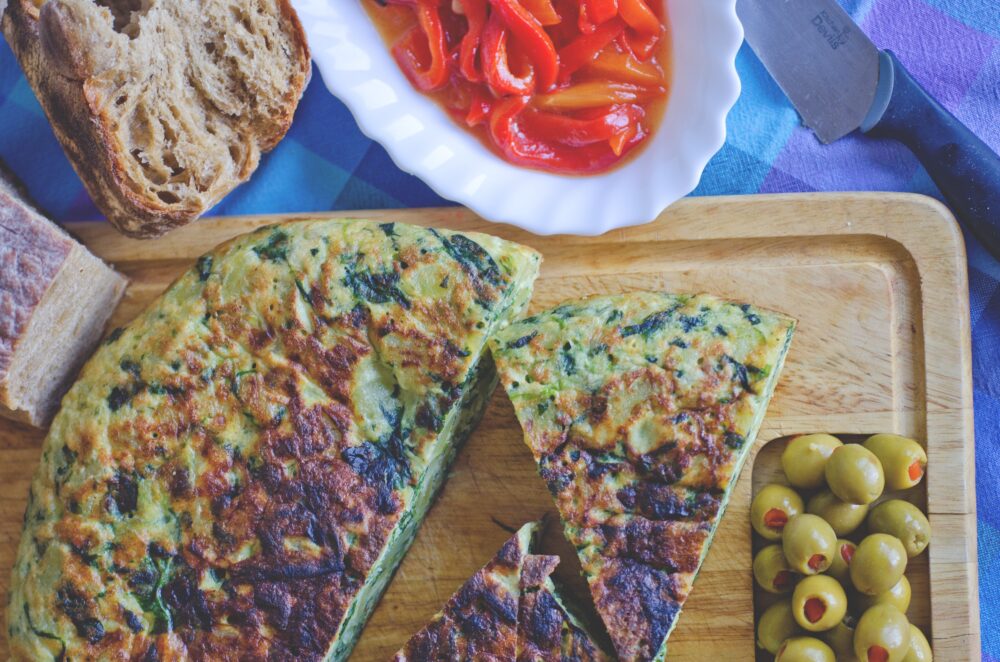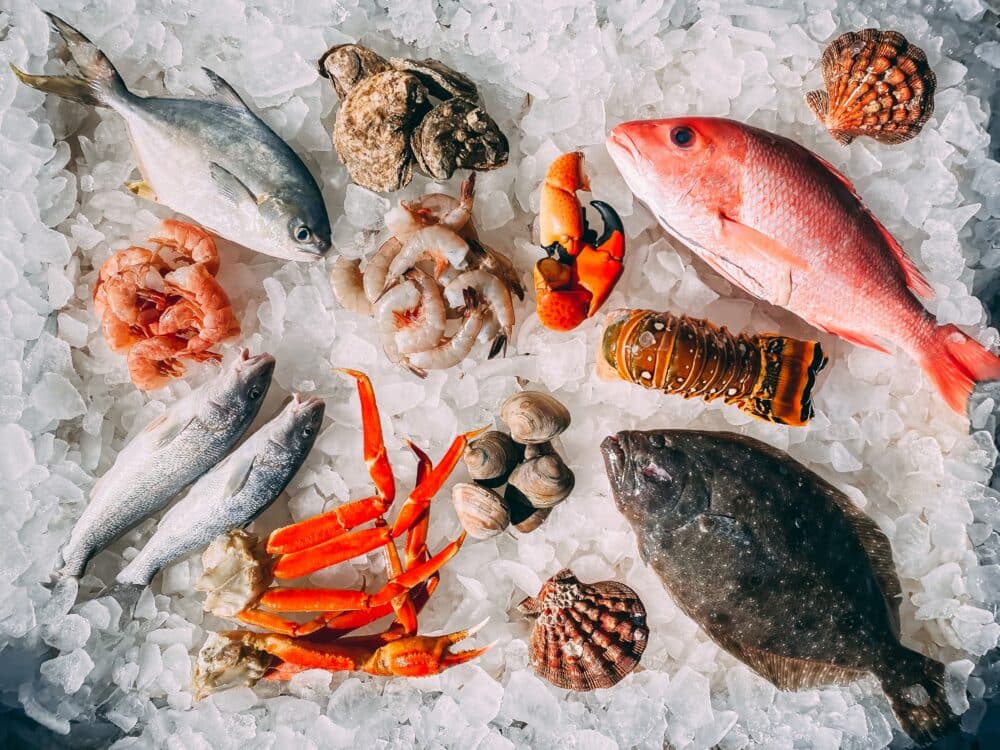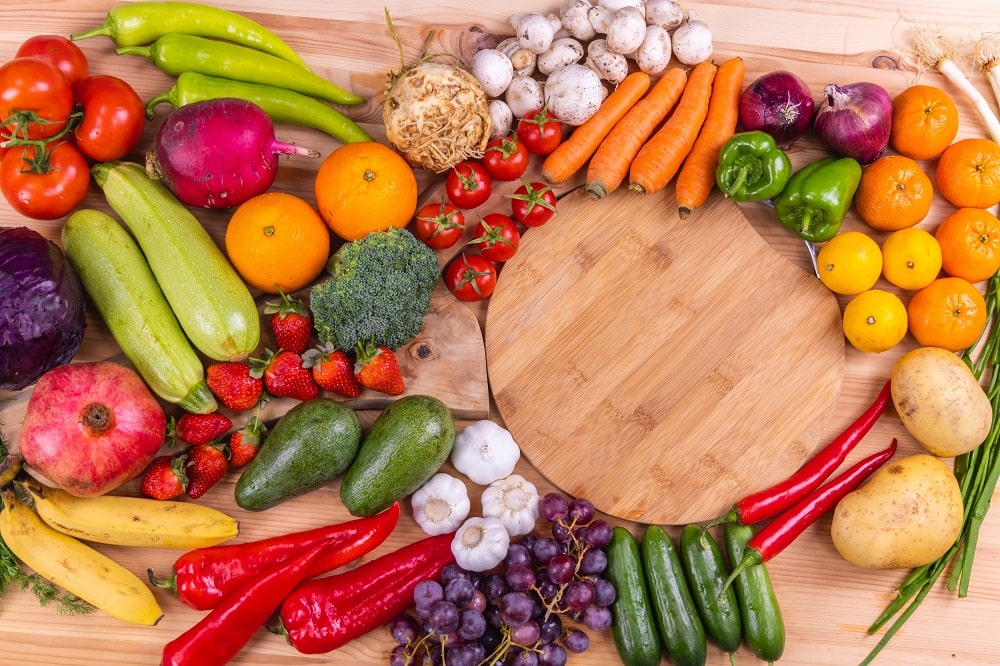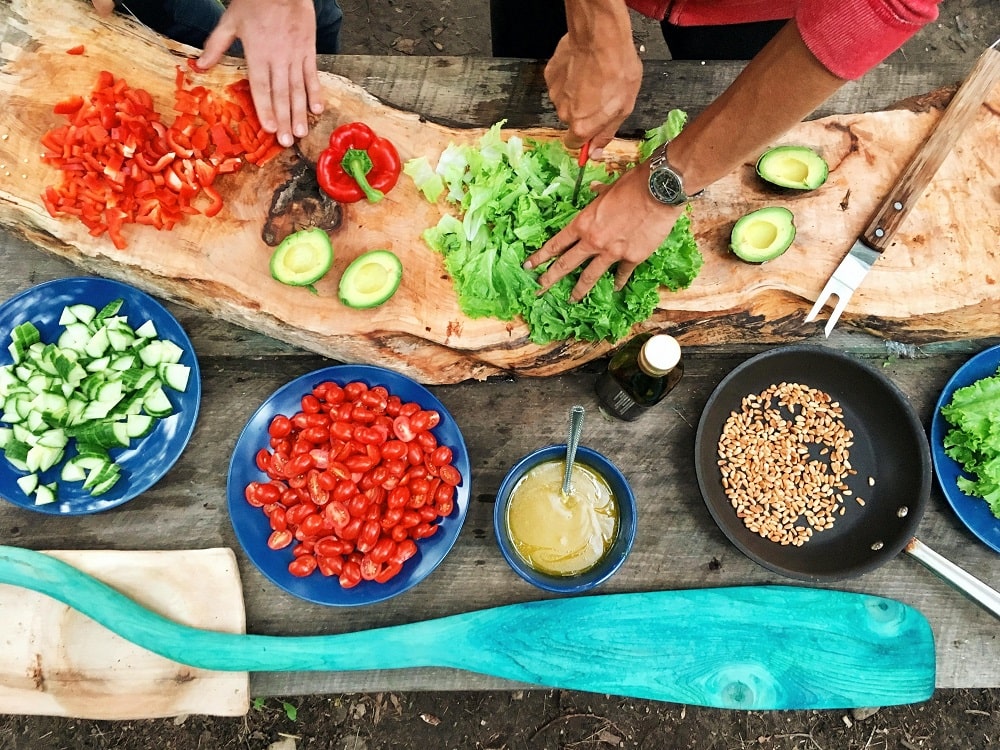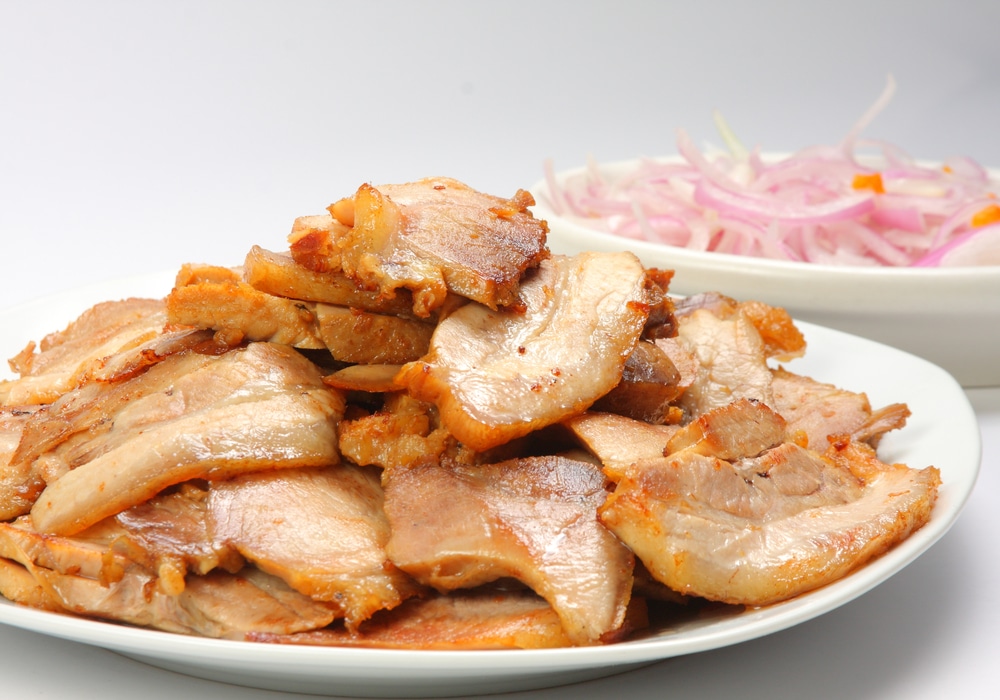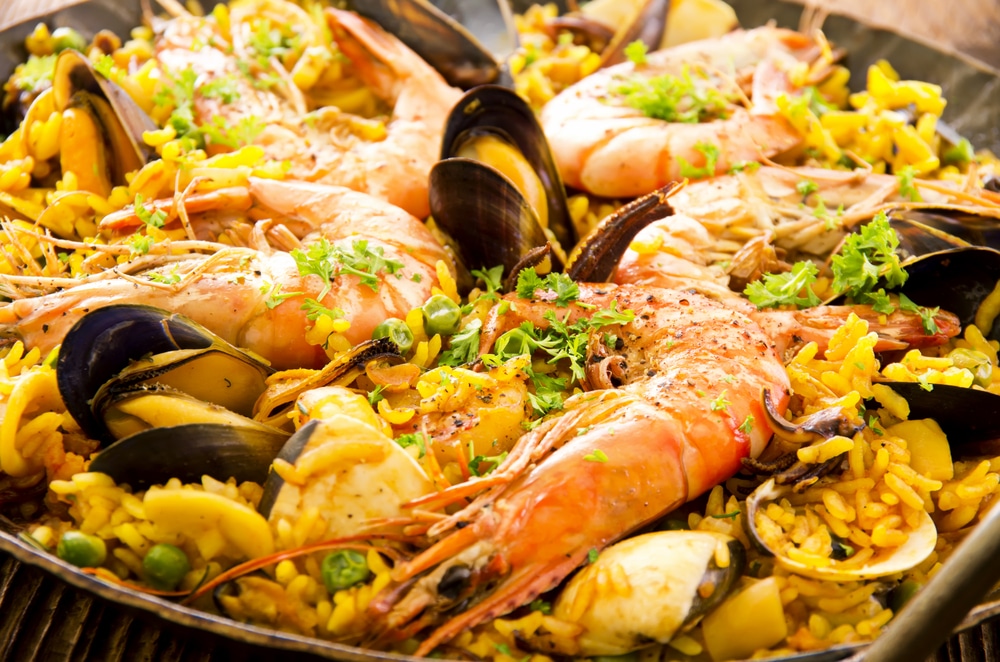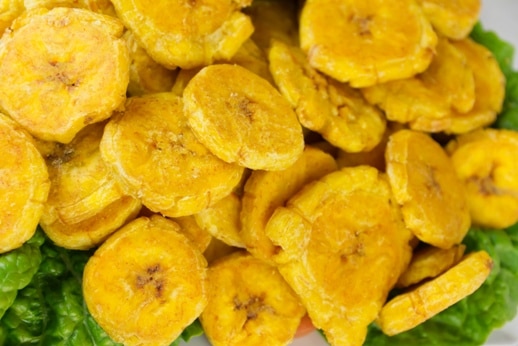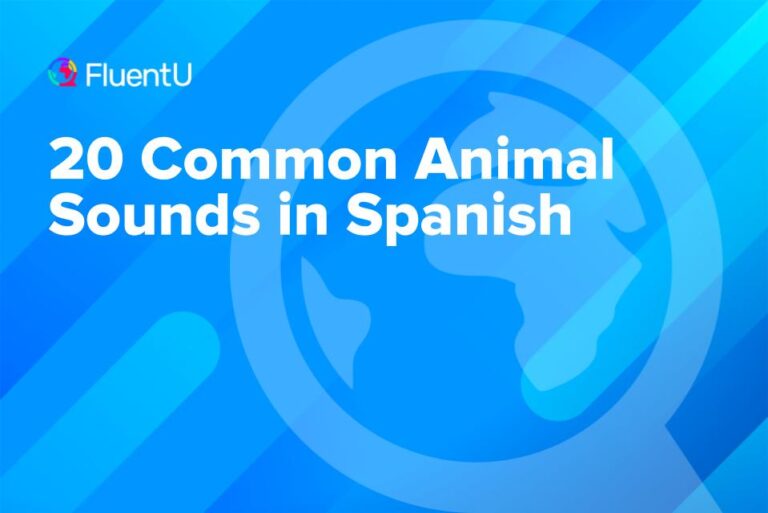Contents
- Finding Your Table
- Navigating the Restaurant
- Understanding Regional Food Traditions
- Bebidas — Drinks
- Desayuno — Breakfast
- Almuerzo — Lunch
- Cena or Merienda — Dinner
- Mariscos — Seafood
- Carne — Meat
- Frutas y Verduras — Fruits and Vegetables
- Food Preparation
- Postres — Desserts
- Culinary Specialties of the Spanish-speaking World
- And One More Thing…
Spanish Restaurant Vocabulary Guide [with Audio]

Mexican and Spanish food is adored by language learners and people who don’t speak a word of Spanish alike. So why not order in the local language?
Learn some essential Spanish restaurant vocabulary in this post and navigate the restaurant like a native Spanish speaker.
Download: This blog post is available as a convenient and portable PDF that you can take anywhere. Click here to get a copy. (Download)
Finding Your Table
If you’ve chosen a swanky bistro that is regularly flooded with devoted patrons, you may need to make a reservation ahead of time. Call them up on the phone and be sure to greet with a friendly salutation. Next, tell them:
Quisiera hacer una reserva para … personas. — I would like to make a reservation for … people.
They will then ask you:
¿Bajo el nombre de quién? — Under whose name?
If you’re like me and you typically fail to plan well in advance, you can slip into a full restaurant by requesting a seat at the bar:
¿Podría sentarme en el bar? — May I sit at the bar?
Or you can just walk in a restaurant and say:
Mesa para … por favor. — Table for … please.
Special dietary preferences are often viewed with a suspicious eye in Latin America. You really need to specify with your server what it is that you cannot eat. Clearly state:
Soy vegetariano… vegetariana. — I am vegetarian.
Tengo alergia a … — I’m allergic to …
No como … — I don’t eat…
I can’t tell you how many times I’ve seen Ecuadorian restaurants serve meat-laden soups to disappointed vegetarian friends. So, my advice to you is to always double-check that your order doesn’t contain something you don’t want to eat.
Navigating the Restaurant
restaurante — restaurant
pedir — to order
quisiera… — I would like…
el menú — menu of the day
la carta — menu
ración — full portion
Media ración — half portion
camarero, camarera — server
mesero, mesera — server [in Latin America]
mesa — table
plato — plate
tenedor — fork
cuchara — spoon
cuchillo — knife
sal — salt
pimienta — pepper
servilleta — napkin
cuenta — check/bill
Tráigame la cuenta, por favor. – Bring me the check, please.
The paper-signing hand gesture translates smoothly enough. Most small restaurants in Latin American will not accept tarjetas de crédito (credit cards), so it’s best to carry some efectivo (cash) in case of emergency.
If you need some help remembering restaurant-related words, consider the following resources:
- Memrise has vocabulary courses (made by both Memrise and its user community) that cover a range of subjects. Some focus on words for various types of food.
- FluentU has videos made by native speakers (and has a section for cuisine and food-related content).
FluentU takes authentic videos—like music videos, movie trailers, news and inspiring talks—and turns them into personalized language learning lessons.
You can try FluentU for free for 2 weeks. Check out the website or download the iOS app or Android app.
P.S. Click here to take advantage of our current sale! (Expires at the end of this month)

- Duolingo has themed “skills” in its course that relate to ordering in a restaurant. You will, however, have to unlock them by completing a level in each preceding skill in the course.
Understanding Regional Food Traditions
While traveling, always ask the locals:
¿Cuál es la comida típica de esta región? — What is the typical food of this region?
Don’t be afraid to ask the waiter what he or she recommends.
¿Qué me recomienda? — What do you recommend?
Bebidas — Drinks
When seated at a restaurant, the first thing a waiter will ask is what you’d like to drink. Know your refreshment vocabulary so you can get straight to reading the menu!
té helado — iced tea
cola — cola/soda
limonada — lemonade
jugo — juice
batido — milkshake
Common flavors of juice or smoothie you might like to order are:
melón — melon
sandía — watermelon
naranja — orange
fresa or frutilla — strawberry
uva — grape
Some alcoholic drinks are:
vino blanco — white wine
vino tinto — red wine
vermut — vermouth
cerveza — beer
sidra — cider
caña — small beer
doble — large beer
Desayuno — Breakfast
Breakfast is arguably the most important meal of the day. Learn how to order breakfast so you can fuel your adventure-filled day abroad!
pan — bread
mermelada — jam/jelly
huevos revueltos — scrambled eggs
tortilla — omelet
tocino — bacon
avena — oatmeal
pan con tomate — bread with tomato
Almuerzo — Lunch
In Latin America it is very common to find yourself in a restaurant that has no menu. For lunch, local restaurant-goers will simply strut in, seat themselves, and request Un almuerzo, por favor. (one lunch, please). Give it a try!
Lunch is a great representation of common home cooking, and is usually the best bargain. They serve something different daily, so you are welcome to ask:
¿Qué tiene el almuerzo de hoy? — What do you have for lunch today?
¿Cuál es el menú de hoy? — What is on the menu of the day?
¿Viene con …? — Does it come with …?
Almuerzo generally includes:
sopa — soup
plato fuerte — main course
postre — dessert
Cena or Merienda — Dinner
There are two commonly used words for dinner: merienda and cena. In most parts of Latin America, merienda refers to an average evening meal and cena is reserved for special occasions – like a big Christmas Eve turkey dinner.
In Spain, merienda is a small meal meant to tide you over between el almuerzo and la cena.
In both contexts, merienda is a light, simple meal – often bread and cheese, a hot chocolate, or another modest snack. Don’t worry though, after an authentic almuerzo there is a good chance you won’t even be hungry by the evening!
Here’s some important menu lingo that will get you through ordering any meal:
Mariscos — Seafood
mariscos — seafood
camarones — shrimp
cangrejo — crab
langosta — lobster
pescado — fish
calamares — squid
atún — tuna
pulpo — octopus
Carne — Meat
chorizo — sausage
jamón — ham
lomo de cerdo — pork loin
bistec — steak
pavo — turkey
codorniz — quail
And here are the meat temperatures:
muy crudo — very rare
poco asado — a little rare
termino medio — medium
bien cocida — well done
Frutas y Verduras — Fruits and Vegetables
espárragos — asparagus
aguacate — avocado
acelga — chard
berenjena — eggplant
calabaza — pumpkin
espinaca — spinach
cebolla — onion
tomate — tomato
pimientos de padrón — padron peppers
Food Preparation
filete — filleted
a la plancha — on the grill
asado — roasted
al ajillo — with garlic
apanado — breaded
a la parrilla — barbecued
frito — fried
Postres — Desserts
torta — cake
ensalada de frutas — fruit salad
gelatina — gelatin (like Jell-O)
Culinary Specialties of the Spanish-speaking World
Here’s what you’ve been waiting for! While at home or abroad, try to seek out traditional cuisine from the Spanish-speaking world to better immerse you in the language and culture. There’s nothing better that justifying indulgence with an educational experience!
Ceviche : A lime marinaded seafood dish served all along the coasts of Central and South America. Each country has its own distinct flavor and style!
Chicharrón : Pork rind extravaganza! This fried, seasoned pig skin is a beloved snack throughout Latin America and parts of Spain.
Churros : Crispy, sugar-coated fried dough – how could anyone resist?
Dulce de tres leches : A moist, super-sweet cake that features three forms of milk (natural, dried, and condensed).
Gazpacho : The cold, refreshing tomato soup popular in Spain.
Paella : A classic Spanish dish that blends rice, beans, seafood, meat, and savory seasonings.
Patacones, Tostones : These crisp, fried plantain slices are a common side dish throughout Latin America.
Armed with this Spanish restaurant and food vocabulary, you should be able to have a pleasant meal without confusion.
Download: This blog post is available as a convenient and portable PDF that you can take anywhere. Click here to get a copy. (Download)
And One More Thing…
If you've made it this far that means you probably enjoy learning Spanish with engaging material and will then love FluentU.
Other sites use scripted content. FluentU uses a natural approach that helps you ease into the Spanish language and culture over time. You’ll learn Spanish as it’s actually spoken by real people.
FluentU has a wide variety of videos, as you can see here:

FluentU brings native videos within reach with interactive transcripts. You can tap on any word to look it up instantly. Every definition has examples that have been written to help you understand how the word is used. If you see an interesting word you don’t know, you can add it to a vocab list.

Review a complete interactive transcript under the Dialogue tab, and find words and phrases listed under Vocab.

Learn all the vocabulary in any video with FluentU’s robust learning engine. Swipe left or right to see more examples of the word you’re on.

The best part is that FluentU keeps track of the vocabulary that you’re learning, and gives you extra practice with difficult words. It'll even remind you when it’s time to review what you’ve learned. Every learner has a truly personalized experience, even if they’re learning with the same video.
Start using the FluentU website on your computer or tablet or, better yet, download the FluentU app from the iTunes or Google Play store. Click here to take advantage of our current sale! (Expires at the end of this month.)



